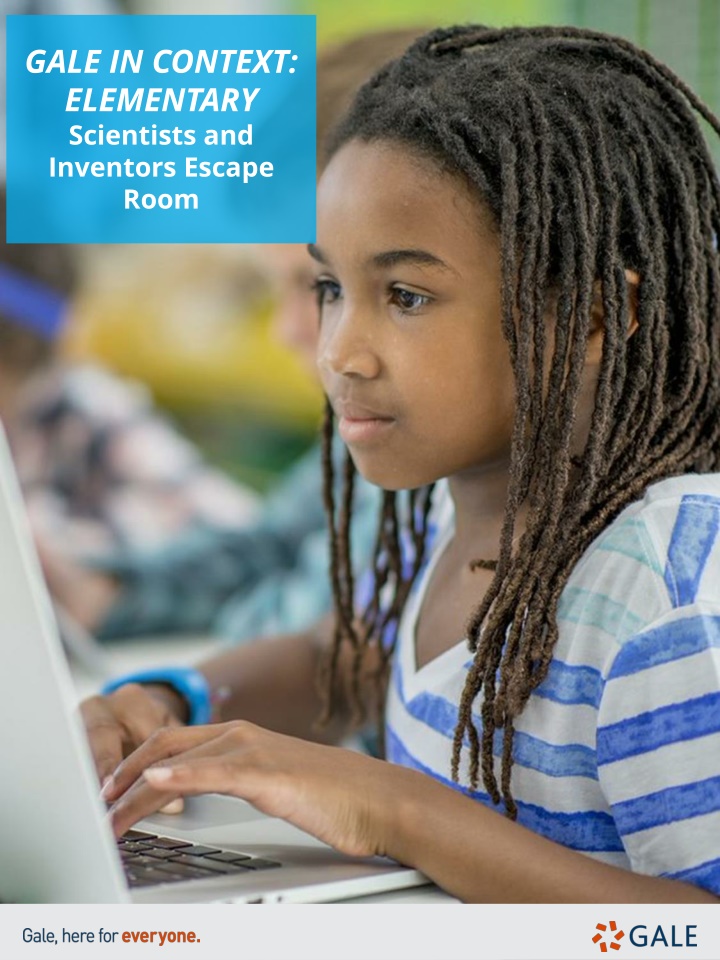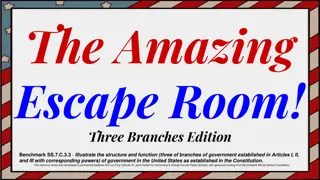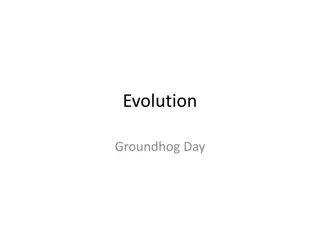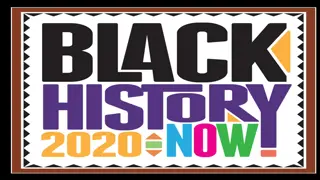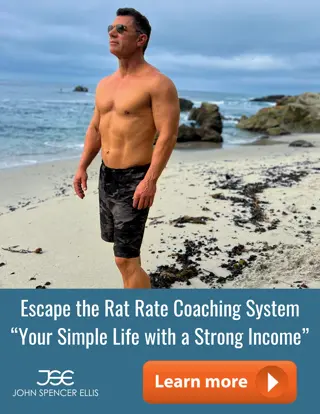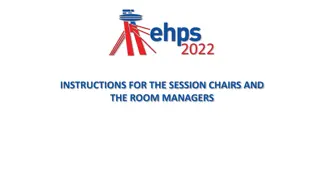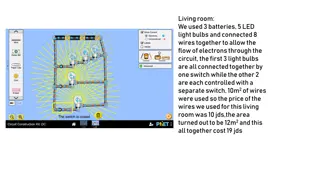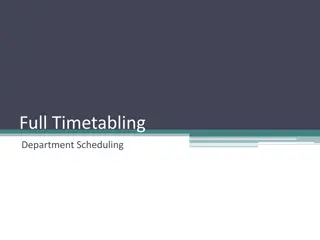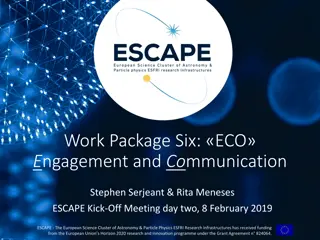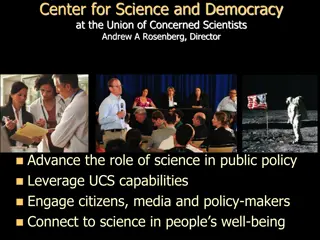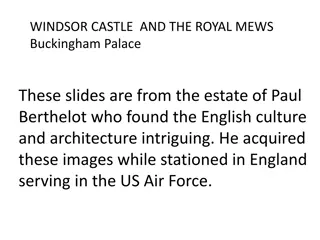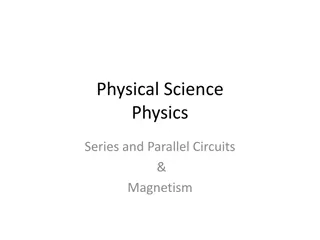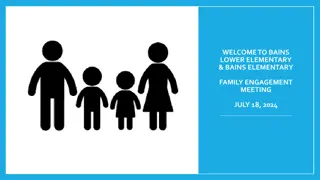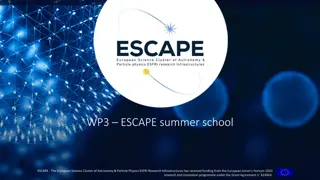Elementary Scientists and Inventors Escape Room
Explore the world of scientists and inventors through an engaging escape room activity. Dive into the lives of individuals like Elizabeth Blackwell, Ada Lovelace, and Isaac Newton by completing interactive tasks that challenge your knowledge and problem-solving skills. Uncover codes, match inventors to their creations, and discover the contributions of these remarkable figures in history. This hands-on activity encourages critical thinking, teamwork, and knowledge retention in a fun and educational setting.
Download Presentation

Please find below an Image/Link to download the presentation.
The content on the website is provided AS IS for your information and personal use only. It may not be sold, licensed, or shared on other websites without obtaining consent from the author.If you encounter any issues during the download, it is possible that the publisher has removed the file from their server.
You are allowed to download the files provided on this website for personal or commercial use, subject to the condition that they are used lawfully. All files are the property of their respective owners.
The content on the website is provided AS IS for your information and personal use only. It may not be sold, licensed, or shared on other websites without obtaining consent from the author.
E N D
Presentation Transcript
GALE IN CONTEXT: ELEMENTARY Scientists and Inventors Escape Room
TABLE OF CONTENTS 1 2 Cover Table of Contents Escape Room Instructions and Arrangements Resource Access Printing Suggestions for Activities Answer Sheet Teacher Answer Key Description Cards for Stations or Folders Task 1 Directions: Inventors Task 1 Cut-and-Sort Activity Task 2 Directions: Elizabeth Blackwell Task 2 Fill-in-the-Blank Activity Task 3 Directions: Ada Lovelace Task 3 Pigpen Cipher Fill-in-the-Blank Activity Modified Pigpen Cipher Regular Pigpen Cipher 3-4 5 6 7 8 9-11 12 13 14 15 16 17 18 19 20 Task 4 Directions: Sire Isaac Newton 21 Task 4 Cut-and-Sort Multiple-Choice Question Activity 22 Task 5 Directions: Katherine Johnson 23 Task 5 Cut-and-Sort Timeline Activity 24 Citation Information
GENERAL INSTRUCTIONS Print and organize all necessary activity materials (see Printing Suggestions). Some stations consist of cut-and-sort activities. You can choose to have students cut these as they progress and then sort or, you can have them cut and placed in envelopes or folders before they begin. BEFORE Tasks can be set up as stations or as completion tasks where groups remain in one location. In either setup, it is important to have materials prepared that equal the number of groups. Having a folder/envelope for each task is best practice. Gale resources should be accessed through the Gale In Context: Elementary database. (See Resource Access page). Walk around the room and assist groups when necessary. Each time a group finishes a task, check their code to approve them to go onto the next one. DURING Review reading material with students. This activity works well as an introduction to a topic, or as a culminating activity at the end of a unit. Students can reflect about what they learned during the activity with reflection writing or use what they learned as a starting point for a deeper research project. AFTER TASK-SPECIFIC INSTRUCTIONS TASK 1: Instructions: Students will watch the assigned video on Gale In Context: Elementary titled When Did That Happen? Invention . As they watch and listen, they will match the inventor to their invention. When in the right order, the letters will be the code they will write on their answer sheet. *Note that the video does speak quicky. There is a transcript below the video for those students who want to read or follow along. Arrangements: If students are working in groups, have them view the video together or watch individually. See Resource Access for best practices on sharing Gale content with students. The activity for this is a cut-and-sort activity. You can have students cut them and then sort or have them precut and stored in an envelope or bag.
TASK 2: Instructions: Students will read the assigned Gale In Context: Elementary document, Elizabeth Blackwell: The First Female Doctor . They will then answer the fill-in-the-blank questions (Hint: question one has a 2-word answer). They will record their answers on the answer sheet under Task 2. Shaded letters on the answer sheet will reveal their code. Arrangements: Questions are designed 2-per page to cut down on copies. See Resource Access for best practices on sharing Gale content with students. TASK 3: Instructions: Students will read the assignedGale In Context: Elementary document on Ada Lovelace. They will then use the pigpen cipher tool to crack the code and fill-in-the-blank. They will record the decoded words on their answer sheet under Task 3. Arrangements: There are 2 copies of the pigpen cipher, a regular and a modified. Choose which one best fits the needs of your students. Make a copy of the cipher for every student so they can work together. See Resource Access for best practices on sharing Gale content with students. TASK 4: Instructions: Students will read the Gale In Context: Elementary document Sir Isaac Newton detective and answer the multiple-choice questions. The answers will reveal their code, which they will write on their answer sheet under Task 4. Arrangements: The multiple-choice questions for this are a cut-and-sort. You can have students cut them and then sort or have them precut and stored in an envelope or bag. See Resource Access for best practices on sharing Gale content with students. TASK 5: Instructions: Students will read the Gale In Context: Elementary biography document on Katherine Johnson. They will then put the events in order based on when they happened (chronological). When they are in the correct order, the numbers will be the code the put on their answer sheet under task 5. This is how they finally escape ! Arrangements: The events are a cut-and-sort activity. You can have students cut them and then sort or have them precut and stored in an envelope or bag. See Resource Access for best practices on sharing Gale content with students.
RESOURCE ACCESS The best way to have students access task articles it to have them visit Gale In Context and perform an Advanced Search. Provide students with the Gale Document Number. They will then select Gale Document Number from the Field drop-down menu and enter the document numbers below to access the content for each task. Task 1: Inventors Task 2: Elizabeth Blackwell Task 3: Ada Lovelace Task 4: Sir Isaac Newton Task 5: Katherine Johnson YEVCQA258042862 A61523858 JHGCFN845370830 A225246468 TCMTQW826537308 Articles can also be shared with students via the Get Link tool.
PRINTING SUGGESTIONS Page 7 Page 8 Page 9-11 Answer Sheet Teacher Answer Key Description Cards for Stations or Folders (optional) Task 1 Direction Cards (2 per page) Task 1 Cut-and-Sort Activity Task 2 Direction Cards (2 per page) Task 2 Fill-in-the-Blank Activity (2 per page) Task 3 Direction Cards (2 per page) Task 3 Pigpen Cipher Fill-in-the-Blank Activity Modified Pigpen Cipher Regular Pigpen Cipher (2 per page) Task 4 Direction Cards (2 per page) Task 4 Cut-and-Sort Multiple-Choice Activity Task 5 Direction Cards (2 per page) Task 5 Cut-and-Sort Timeline Activity Page 12 Page 13 Page 19 Page 20 Page 21 Page 22 Page 23 Page 24 Page 25 Pages 26-27 Page 28 Page 30
ANSWER SHEET Gale In Context: Elementary Scientists and Inventors Escape Room Group Members: TASK TASK 1 1 TASK 2 1. 2. 3. 4. 5. CODE TASK 3 TASK 4 1. ______________________________ 2. __________________ 3. ____________________ 4. ___________________________ 5. ______________________________ TASK 5 _____ _____ _____ _____ _____ _____ _____ YOU ESCAPED!
ANSWER KEY Gale In Context: Elementary Scientists and Inventors Escape Room Group Members: TASK TASK 1 1 F C D B A E TASK 2 S H V Y N B T G E W U E E M O L A N I M L C E L E E E A Y R E 1. 2. 3. 4. 5. CODE WORD B A E M N TASK 3 TASK 4 1. computer 2. science 3. machine 4. language 5. countess C O I N S TASK 5 __3__ __4__ __7__ __2__ __6__ __5__ __1__ YOU ESCAPED!
TASK 1 TASK 1 group answer sheet. record answers on our the code! Be sure to your task and crack resources to complete Use the Task 1 INVENTORS record answers on our resources to complete group answer sheet. the code! Be sure to your task and crack INVENTORS Use the Task 1 TASK 2 TASK 2 BLACKWELL ELIZABETH record answers on our group answer sheet. record answers on our the code! Be sure to your task and crack resources to complete Use the Task 2 resources to complete group answer sheet. the code! Be sure to your task and crack BLACKWELL ELIZABETH Use the Task 2
TASK 3 TASK 3 record answers on our resources to complete group answer sheet. record answers on our the code! Be sure to your task and crack resources to complete Use the Task 3 LOVELACE ADA group answer sheet. the code! Be sure to your task and crack Use the Task 3 LOVELACE ADA TASK 4 TASK 4 NEWTON SIR ISAAC group answer sheet. record answers on our the code! Be sure to your task and crack resources to complete Use the Task 4 record answers on our resources to complete group answer sheet. the code! Be sure to your task and crack SIR ISAAC Use the Task 4 NEWTON
TASK 5 TASK 5 record answers on our resources to complete group answer sheet. record answers on our the code! Be sure to your task and crack resources to complete Use the Task 5 JOHNSON KATHERINE group answer sheet. the code! Be sure to your task and crack KATHERINE Use the Task 5 JOHNSON
WHEN DID THAT HAPPEN? TASK 1 INVENTION Inventors create new products. The telephone, the electric guitar, and lasers are all examples of successful inventions. Inventors claim legal ownership of their invention by getting a patent. Patents are a form of legal protection. They are issued by the government. Inventors can make and sell their patented inventions. Some inventions are very successful. But many others do not make money. There will always be inventors. There are always better ways to do things. Inventors create these things. Directions: Watch the assigned video on Gale In Context: Elementary titled When Did That Happen? Invention . As you watch and listen, match the inventor to their invention. When in the right order, the letters will be your code. Put the code on your answer sheet. - - - - - - - - - - - - - - - - - - - - - - - - - - - - - - - - - - - - - - - - - - - - - - - - - - - - - - - WHEN DID THAT HAPPEN? TASK 1 INVENTION Inventors create new products. The telephone, the electric guitar, and lasers are all examples of successful inventions. Inventors claim legal ownership of their invention by getting a patent. Patents are a form of legal protection. They are issued by the government. Inventors can make and sell their patented inventions. Some inventions are very successful. But many others do not make money. There will always be inventors. There are always better ways to do things. Inventors create these things. Directions: Watch the assigned video on Gale In Context: Elementary called When Did That Happen? Invention . As you watch and listen, match the inventor to their invention. When in the right order, the letters will be your code. Put the code on your answer sheet.
1 F Marion Donovan disposable diaper A 2 Mary Anderson dishwasher 3 B Lonnie Johnson cell phone 4 E Martin Cooper zipper D 5 Josephine Cochrane water gun 6 C Whitcomb L. Judson windshield wipers
ELIZABETH BLACKWELL TASK 2 Elizabeth Blackwell was the first female doctor in America. She was born in 1821. Most women stayed at home then. They did not have jobs. They did not go to college. Blackwell was different. She became a doctor. She also opened a school. It was for women. These women wanted to be doctors. Directions: Read the assigned Gale document, Elizabeth Blackwell: The First Female Doctor . Answer the fill-in-the-blank questions (Hint: question one has a 2- word answer). Use the shaded letters on your answer sheet for your code. - - - - - - - - - - - - - - - - - - - - - - - - - - - - - - - - - - - - - - - - - - - - - - - - - - - - - - - ELIZABETH BLACKWELL TASK 2 Elizabeth Blackwell was the first female doctor in America. She was born in 1821. Most women stayed at home then. They did not have jobs. They did not go to college. Blackwell was different. She became a doctor. She also opened a school. It was for women. These women wanted to be doctors. Directions: Read the assigned Gale document, Elizabeth Blackwell: The First Female Doctor . Answer the fill-in-the-blank questions (Hint: question one has a 2- word answer). Use the shaded letters on your answer sheet for your code.
1. Elizabeths teacher brought in a ______ ______ to teach how the human eye worked. 2. Elizabeth worked as a _____________ in North Carolina and South Carolina to save her money. 3. After being denied to several medical schools, she was accepted at a small school in ______________, New York, where she graduated top of her class. 4. Elizabeth s sister, ___________ , came to work at her dispensary in New York after graduating medical school in Ohio. 5. After opening and running a successful hospital, the sisters opened their own medical school for ________________. - - - - - - - - - - - - - - - - - - - - - - - - - - - - - - - - - - - - - - - - - - - - - - - - - - - - - - - 1. Elizabeth s teacher brought in a ______ ______ to teach how the human eye worked. 2. Elizabeth worked as a _____________ in North Carolina and South Carolina to save her money. 3. After being denied to several medical schools, she was accepted at a small school in ______________, New York, where she graduated top of her class. 4. Elizabeth s sister, ___________ , came to work at her dispensary in New York after graduating medical school in Ohio. 5. After opening and running a successful hospital, the sisters even opened their own medical school for ________________.
ADA LOVELACE TASK 3 Ada Lovelace liked math. She was good it. She was from England. She may have been a computer programmer. She may have been the first, She had many ideas. They were about computers. Lovelace was born in 1815. Her father wrote poems. He was famous. She never knew him, though. He left after she was born. Directions: Use the pigpen cipher tool to crack the code and fill-in-the-blank. Record the decoded words on your answer sheet under Task 3. - - - - - - - - - - - - - - - - - - - - - - - - - - - - - - - - - - - - - - - - - - - - - - - - - - - - - - - - - - - - - - - - - - - - - - - - - - - - - - - - - - - - - - - - - - - - - - - - - - - - - - - - - - - - - - ADA LOVELACE TASK 3 Ada Lovelace liked math. She was good it. She was from England. She may have been a computer programmer. She may have been the first, She had many ideas. They were about computers. Lovelace was born in 1815. Her father wrote poems. He was famous. She never knew him, though. He left after she was born. Directions: Use the pigpen cipher tool to crack the code and fill-in-the-blank. Record the decoded words on your answer sheet under Task 3.
1. Lovelace is thought of as the first ___________________ programmer. 2. Lovelace began studying math and _____________ at the age of four. 3. Lovelace translated an article discussing Charles Babbage s invention. She added her own notes, which described a way for the _______________ to follow a set of instructions that would repeat in a loop. Many consider this the first computer program. 4. Few people realized how important Lovelace s ideas were when she was alive. Her ideas were discovered about 100 years after her death. Lovelace has been honored for her work in modern times. A whole computer _______________ was named Ada in her honor in 1980. 5. Lovelace married William King in 1835. In 1838 King became the Earl of Lovelace. Lovelace became known as the __________________of Lovelace.
PIGPEN CIPHER A B C D E F G H I J K L M N O P Q R S T U V W X Y Z
PIGPEN CIPHER - - - - - - - - - - - - - - - - - - - - - - - - - - - - - - - - - - - - - - - - - - - - - - - - - - - - - - - PIGPEN CIPHER
SIR ISAAC NEWTON TASK 4 Isaac Newton was an English scientist and professor. He is one of the greatest scientists of all time. Isaac Newton was born on January 4, 1643, in Woolsthorpe, England. His father was also named Isaac. He died three months before Newton was born. Isaac Newton discovered the laws of motion. Directions: Read the Gale document Sir Isaac Newton detective and answer the multiple-choice questions. The answers will reveal your code. Write your code on your answer sheet. - - - - - - - - - - - - - - - - - - - - - - - - - - - - - - - - - - - - - - - - - - - - - - - - - - - - - - - SIR ISAAC NEWTON TASK 4 Isaac Newton was an English scientist and professor. He is one of the greatest scientists of all time. Isaac Newton was born on January 4, 1643, in Woolsthorpe, England. His father was also named Isaac. He died three months before Newton was born. Isaac Newton discovered the laws of motion. Directions: Read the Gale document Sir Isaac Newton detective and answer the multiple-choice questions. The answers will reveal your code. Write your code on your answer sheet.
1. Isaac Newton investigated crime and criminals, but only when they involved what? a. stolen credit cards c. counterfeit money b. smuggled goods d. stolen cars 2. In 1696, 1 out of every ______ coins was counterfeit or fake. l. 100 n. 50 m. 20 o. 10 3. British counterfeiters were known as what? h. masters j. minters i. coiners k. clippers 4. Early in 1696, the British government decided to withdraw all handmade coins from circulation and replace them with new, machine-made ones. This was known as the what? n. Great Recoinage p. Fake Gate o. Counterfeit Clip q. Newton s Net 5. One of Newton s many secrets was that he practiced what? r. magic t. clipping s. alchemy u. stealing
KATHERINE JOHNSON TASK 5 Katherine Johnson worked with numbers. She worked for NASA. She helped people travel into space. Johnson was born in 1918. She grew up in West Virginia. Johnson was smart. She was good at math. She finished middle school early. She was only 10. She could not go to high school. Directions: Read the Gale biography document on Katherine Johnson. Put the events in order based on when they happened. When they are in the right order, use the numbers as your code on your answer sheet. This is how you finally escape! - - - - - - - - - - - - - - - - - - - - - - - - - - - - - - - - - - - - - - - - - - - - - - - - - - - - - - - KATHERINE JOHNSON TASK 5 Katherine Johnson worked with numbers. She worked for NASA. She helped people travel into space. Johnson was born in 1918. She grew up in West Virginia. Johnson was smart. She was good at math. She finished middle school early. She was only 10. She could not go to high school. Directions: Read the Gale biography document on Katherine Johnson. Put the events in order based on when they happened. When they are in the right order, use the numbers as your code on your answer sheet. This is how you finally escape!
Johnson grew up in White Sulphur Springs, West Virginia. She was a very good student. She had a special talent for math. She finished middle school when she was only ten years old. 3 A movie called Hidden Figures focuses on the lives of three African American human computers. One of these is Katherine Johnson. The other women honored in the film were Mary Jackson and Dorothy Vaughan. 5 1 Katherine Johnson turned 100 years old. 4 She married James Francis Goble, and they had three daughters together. NASA succeeded in putting the first person, Alan Shepard, into space 7 2 Johnson retired from her job at NASA. 6 Katherine was awarded the Presidential Medal of Freedom.
CITATION INFORMATION "Inventors." Careers, Gale, 2014. Gale Elementary Online Collection. Gale In Context:Elementary, link.gale.com/apps/doc/MELTXB926039047/ITKE?u=[ LOCATIONID]&sid=bookmark-ITKE&xid=60aa84d9. Accessed 22 Nov. 2022. TASK 1 "When Did That Happen? Invention." When Did That Happen? Invention, 1 Jan. 2017. GaleInContext:Elementary, link.gale.com/apps/doc/YEVCQA2580428 62/ITKE?u=[LOCATIONID]&sid=bookmark-ITKE&xid=30fcbae8. Accessed 22 Nov. 2022. "Elizabeth Blackwell." Gale Elementary Online Collection, Gale, part of Cengage Group, 2020. GaleInContext:Elementary, link.gale.com/apps/doc/ZZOJGN887306030/ITK E?u=[LOCATIONID]&sid=bookmark-ITKE&xid=af18b575. Accessed 28 Nov. 2022. TASK 2 "Elizabeth Blackwell: The First Woman Doctor." Child Life, vol. 79, no. 3, Apr. 2000, p. 24. GaleInContext:Elementary, link.gale.com/apps/doc/A61523858/ITKE?u=[LOCA TIONID]&sid=bookmark-ITKE&xid=f9e03b99. Accessed 28 Nov. 2022. TASK 3 "Ada Lovelace." Gale Elementary Online Collection, Gale, part of Cengage Group, 2020. GaleInContext:Elementary, link.gale.com/apps/doc/JHGCFN845370830/ITKE ?u=[LOCATIONID]&sid=bookmark-ITKE&xid=238f912f. Accessed 28 Nov. 2022. "Isaac Newton." Gale Elementary Online Collection, Gale, part of Cengage Group, 2022. GaleInContext:Elementary, link.gale.com/apps/doc/KRWJBS309846111/ITKE ?u=[LOCATIONID]&sid=bookmark-ITKE&xid=7232c7b2. Accessed 28 Nov. 2022. TASK 4 Rosinsky, Natalie M. "Sir Isaac Newton ... detective." Odyssey, vol. 19, no. 2, Feb. 2010, pp.32+. GaleInContext:Elementary, link.gale.com/apps/doc/A225246468/ITKE?u= [LOCATIONID]&sid=bookmark-ITKE&xid=fc42636f. Accessed 28 Nov. 2022. "Katherine Johnson." Gale Elementary Online Collection, Gale, part of Cengage Group, 2020. GaleInContext:Elementary, link.gale.com/apps/doc/SYVJCZ527312775/ITKE? u=[LOCATIONID]&sid=bookmark-ITKE&xid=d3c77398. Accessed 28 Nov. 2022. TASK 5 "Katherine Johnson." Gale Elementary Online Collection, Gale, part of Cengage Group, 2020. GaleInContext:Elementary, link.gale.com/apps/doc/TCMTQW826537308/IT KE?u=[LOCATIONID]&sid=bookmark-ITKE&xid=a6bea3a0. Accessed 28 Nov. 2022. EXPLORE MORE! Find more classroom resources and support materials at: support.gale.com
